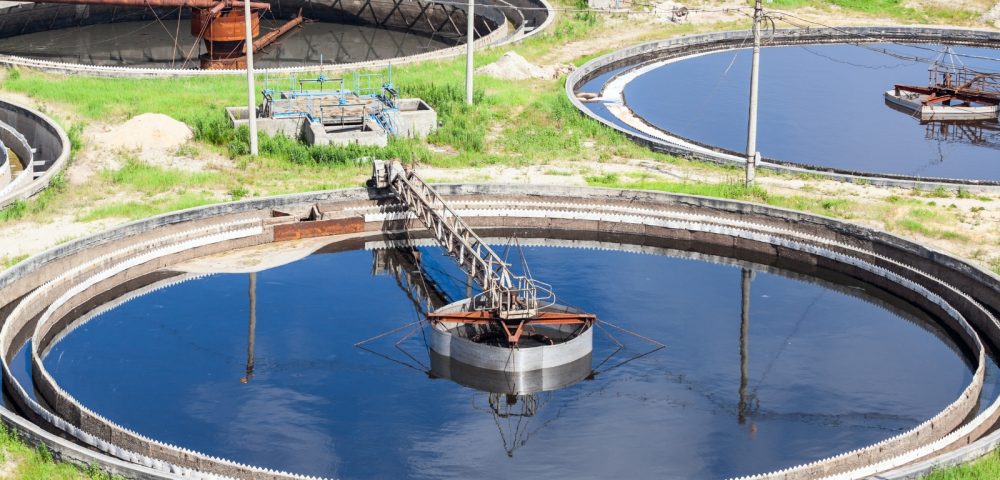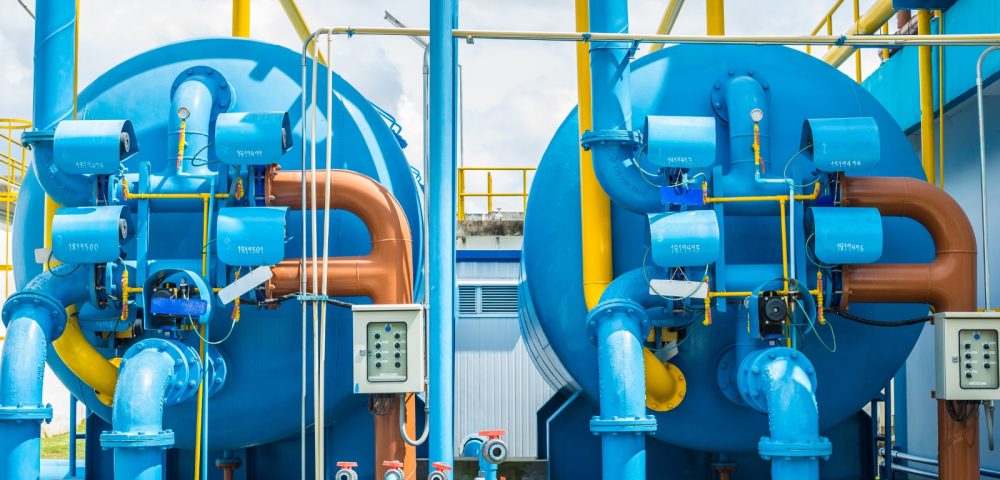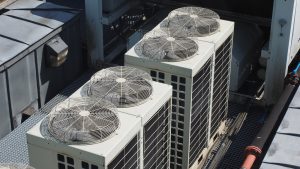What if your sewage treatment plant burns more money than it saves on water? It is actually what is occurring all around the world. Therefore, you are not alone. We notice that rising energy prices, ageing infrastructure, and strict discharge limits are driving costs through the roof. No need to say that every missed efficiency is quietly draining your budget. However, if you align your sewage operations with the right strategies, you will be able to reduce sewage processing plant costs in parallel.
Inside this article, we dive into nine practical ways to cut operating costs while keeping your plant compliant and sustainable.
Inside this article, we dive into nine practical ways to cut operating costs while keeping your plant compliant and sustainable.
We will look into
- What is the Cost of a Sewage Treatment Plant?
- Understanding the Cost Drivers in Sewage Processing Plants
- 9 Proven Ways to Cut Sewage Treatment Plant Costs
- Optimising Energy Consumption with Smart Controls
- Upgrading to Energy-Efficient Equipment
- Implementing Predictive and Preventive Maintenance
- Improving Sludge Handling and Dewatering Efficiency
- Automating Chemical Dosing Systems
- Reusing Treated Water for Non-Potable Applications
- Applying for Government Grants and Green Incentives
- Training Staff for Efficiency and Awareness
- Adopting Data Analytics for Cost Optimisation
- Balancing Efficiency, Compliance, and Cost via Digital Tools
What is the Cost of a Sewage Treatment Plant?

If you conduct a thorough research on communities such as Quora, you can see that the cost of a sewage treatment plant depends on flow capacity and wastewater type, ranging from $10 million to several hundred million.
Small plants average $25 per gallon per day, while a 1.000 MGD SBR can cost $11 million. Monthly operational costs range from $40K–$50K, with added expenses from lift stations, labour, power, and maintenance.
Small plants average $25 per gallon per day, while a 1.000 MGD SBR can cost $11 million. Monthly operational costs range from $40K–$50K, with added expenses from lift stations, labour, power, and maintenance.
Understanding the Cost Drivers in Sewage Processing Plants

- Energy bills quickly stack up when pumps and blowers run full speed around the clock, even when the load does not need it.
- Maintenance costs spiral when outdated machines break down often, and parts take time or money to replace.
- Labour expenses rise fast when the plant depends heavily on manual checks, slow repairs, and constant supervision.
- When dosing systems cannot adjust properly, they dump more than needed.
- Sludge handling pulls money in every direction, from thickening to dewatering to transport, especially when systems run inefficiently.
- Equipment that does not match today’s demand drags performance and keeps electricity meters spinning nonstop.
- Water loss and leaks push hidden costs higher when unnoticed for long periods.
- Emergency fixes and unplanned shutdowns wreck monthly cost plans and force teams to spend without preparation.
9 Proven Ways to Cut Sewage Treatment Plant Costs

Optimising Energy Consumption with Smart Controls
Sewage treatment plants normally waste energy when equipment runs at full speed, even when demand is low.
Smart controls like SCADA systems and variable frequency drives (VFDs) help solve this. These systems adjust pump or blower speeds based on real-time loads, trimming energy use without affecting performance. For example, you can lower blower output during off-peak hours, saving thousands annually. This way, operators can stay in control and make quicker decisions.
Smart controls like SCADA systems and variable frequency drives (VFDs) help solve this. These systems adjust pump or blower speeds based on real-time loads, trimming energy use without affecting performance. For example, you can lower blower output during off-peak hours, saving thousands annually. This way, operators can stay in control and make quicker decisions.
Upgrading to Energy-Efficient Equipment
Old pumps, motors, and aerators are the ones that drain money due to their heavy power use and frequent repairs. Replacing them with energy-efficient models makes a big difference fast. Newer equipment runs smoother, lasts longer, and needs less maintenance.
The return on investment usually appears within two to five years, depending on the plant size. This is how savings continue to stack up each month through reduced energy bills. Instead of reacting to breakdowns, smart operators plan upgrades in phases. This way, plants avoid major downtime while improving cost control.
The return on investment usually appears within two to five years, depending on the plant size. This is how savings continue to stack up each month through reduced energy bills. Instead of reacting to breakdowns, smart operators plan upgrades in phases. This way, plants avoid major downtime while improving cost control.
Implementing Predictive and Preventive Maintenance
Waiting until something breaks always ends up costing more. Smart plants use predictive maintenance tools like vibration sensors and real-time monitors to catch problems early. These tools tell you when a pump or motor starts acting strangely, so you can fix it before it fails.
Also, condition-based maintenance (CBM) schedules repairs based on equipment health instead of the calendar. This method keeps machines running longer and avoids surprise shutdowns.
Also, condition-based maintenance (CBM) schedules repairs based on equipment health instead of the calendar. This method keeps machines running longer and avoids surprise shutdowns.
Improving Sludge Handling and Dewatering Efficiency
Sludge management is where a massive part of any treatment plant’s budget goes. Poor dewatering adds weight, increases disposal costs, and drains money fast.
However, plants can reduce expenses by fine-tuning polymer dosing and using newer dewatering systems like screw presses or centrifuges. These upgrades remove more water from sludge, cutting hauling fees. Some plants even convert sludge into biogas or use it as fertiliser, turning waste into something useful. Every improvement in handling means lower transport, chemical, and storage costs.
However, plants can reduce expenses by fine-tuning polymer dosing and using newer dewatering systems like screw presses or centrifuges. These upgrades remove more water from sludge, cutting hauling fees. Some plants even convert sludge into biogas or use it as fertiliser, turning waste into something useful. Every improvement in handling means lower transport, chemical, and storage costs.
Automating Chemical Dosing Systems
What we see is that chemical dosing normally runs on fixed schedules, but treatment conditions change all the time. If a system adds too much or too little, you end up wasting money or harming treatment quality.
However, when it comes to automated dosing systems, they fix this problem by using real-time sensors to match chemical input with actual water conditions. These systems reduce overdosing, lower chemical use, and stabilise process performance. You will not need as many adjustments from operators, and the plant becomes easier to manage. Over weeks and months, the savings start to show clearly in your budget.
However, when it comes to automated dosing systems, they fix this problem by using real-time sensors to match chemical input with actual water conditions. These systems reduce overdosing, lower chemical use, and stabilise process performance. You will not need as many adjustments from operators, and the plant becomes easier to manage. Over weeks and months, the savings start to show clearly in your budget.
Reusing Treated Water for Non-Potable Applications
It is noticeable that freshwater costs continue to rise, and discharging treated water throws away a valuable resource. Plants can cut costs by reusing treated water for non-drinking purposes like irrigation, cooling systems, or flushing toilets. This approach reduces the need for fresh intake and lowers disposal volume.
Businesses in industrial zones find it useful for boilers or cleaning. Reuse systems need some extra filtering or storage tanks, but they quickly start paying back. Instead of wasting clean water, plants turn it into a second asset. Reusing treated water not only saves money but also helps meet environmental targets with practical action.
Businesses in industrial zones find it useful for boilers or cleaning. Reuse systems need some extra filtering or storage tanks, but they quickly start paying back. Instead of wasting clean water, plants turn it into a second asset. Reusing treated water not only saves money but also helps meet environmental targets with practical action.
Applying for Government Grants and Green Incentives
You already know that governments across the globe want cleaner wastewater systems and offer grants or subsidies to make that happen. Sewage plants that invest in energy-saving upgrades, renewable energy, or water reuse projects usually qualify for funding. These programmes reduce upfront costs and shorten payback periods.
This is not easy, as operators need to stay updated on local policies and apply early. Some regions offer tax breaks or low-interest loans for upgrades. Taking advantage of these options shifts the financial burden away from plant owners.
This is not easy, as operators need to stay updated on local policies and apply early. Some regions offer tax breaks or low-interest loans for upgrades. Taking advantage of these options shifts the financial burden away from plant owners.
Training Staff for Efficiency and Awareness
Did you know that staff training plays a huge role in reducing plant costs? Teams that understand equipment limits, maintenance schedules, and energy-saving practices prevent waste without needing expensive consultants. This is when the regular workshops, refreshers, and hands-on sessions keep everyone sharp and aligned with cost-saving goals.
When staff notice small inefficiencies, like a leaking valve or a misaligned blower, they can fix them before they become expensive. Training also builds ownership and pride in performance. Instead of just reacting, the team becomes part of the solution.
When staff notice small inefficiencies, like a leaking valve or a misaligned blower, they can fix them before they become expensive. Training also builds ownership and pride in performance. Instead of just reacting, the team becomes part of the solution.
Adopting Data Analytics for Cost Optimisation
Sewage treatment plants now use digital dashboards, historical trend analysis, and smart sensors to find cost leaks. The good thing about them is that these tools track energy spikes, equipment wear, and chemical overuse. Operators can use digital twins and analytics platforms to simulate improvements before trying them in real life.
This way, you avoid expensive trial-and-error. Data also helps in planning maintenance, forecasting budgets, and improving process flow.
This way, you avoid expensive trial-and-error. Data also helps in planning maintenance, forecasting budgets, and improving process flow.
Balancing Efficiency, Compliance, and Cost via Digital Tools

When running a sewage plant, balancing cost, efficiency, and compliance may feel like a dream. The reality is that it should be a data-driven reality. Digital tools like Wastewater Asset Management Solutions are developed considering many decades ahead. With them, you will see where money hides, where time leaks, and where compliance risks sleep. It is time to collaborate with an industry expert and lead a tech-driven sewage treatment architecture today.







